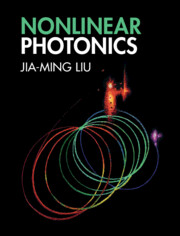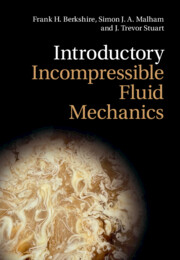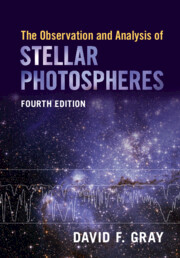Refine search
Actions for selected content:
36846 results in Cambridge Textbooks
4 - Intrusion of Magma
-
- Book:
- Principles of Igneous and Metamorphic Petrology
- Published online:
- 07 April 2022
- Print publication:
- 06 January 2022, pp 47-74
-
- Chapter
- Export citation
8 - Introduction to Thermodynamics
-
- Book:
- Principles of Igneous and Metamorphic Petrology
- Published online:
- 07 April 2022
- Print publication:
- 06 January 2022, pp 184-199
-
- Chapter
- Export citation
Mineral Abbreviations
-
- Book:
- Principles of Igneous and Metamorphic Petrology
- Published online:
- 07 April 2022
- Print publication:
- 06 January 2022, pp xxv-xxvi
-
- Chapter
- Export citation
10 - Thermodynamics of Solutions
-
- Book:
- Principles of Igneous and Metamorphic Petrology
- Published online:
- 07 April 2022
- Print publication:
- 06 January 2022, pp 217-233
-
- Chapter
- Export citation
12 - Culture
- from Part II - Applications
-
- Book:
- Inequality
- Published online:
- 05 January 2022
- Print publication:
- 06 January 2022, pp 390-429
-
- Chapter
- Export citation
3 - Understanding Inequality
- from Part I - Basic Concepts
-
- Book:
- Inequality
- Published online:
- 05 January 2022
- Print publication:
- 06 January 2022, pp 63-97
-
- Chapter
- Export citation
Index
-
- Book:
- Nonlinear Photonics
- Published online:
- 05 January 2022
- Print publication:
- 06 January 2022, pp 577-588
-
- Chapter
- Export citation
9 - Free Energy and Phase Equilibria
-
- Book:
- Principles of Igneous and Metamorphic Petrology
- Published online:
- 07 April 2022
- Print publication:
- 06 January 2022, pp 200-216
-
- Chapter
- Export citation
Answers to Selected Quantitative Review Questions
-
- Book:
- Principles of Igneous and Metamorphic Petrology
- Published online:
- 07 April 2022
- Print publication:
- 06 January 2022, pp 704-706
-
- Chapter
- Export citation
14 - Multiphoton Absorption
-
- Book:
- Nonlinear Photonics
- Published online:
- 05 January 2022
- Print publication:
- 06 January 2022, pp 404-417
-
- Chapter
- Export citation
Preface
-
- Book:
- Inequality
- Published online:
- 05 January 2022
- Print publication:
- 06 January 2022, pp xxi-xxiii
-
- Chapter
- Export citation
Index
-
- Book:
- Principles of Igneous and Metamorphic Petrology
- Published online:
- 07 April 2022
- Print publication:
- 06 January 2022, pp 752-774
-
- Chapter
- Export citation
19 - Graphical Analysis of Metamorphic Mineral Assemblages
-
- Book:
- Principles of Igneous and Metamorphic Petrology
- Published online:
- 07 April 2022
- Print publication:
- 06 January 2022, pp 520-544
-
- Chapter
- Export citation
11 - Electro-optic Modulation
-
- Book:
- Nonlinear Photonics
- Published online:
- 05 January 2022
- Print publication:
- 06 January 2022, pp 283-320
-
- Chapter
- Export citation
2 - Explaining Inequality
- from Part I - Basic Concepts
-
- Book:
- Inequality
- Published online:
- 05 January 2022
- Print publication:
- 06 January 2022, pp 30-62
-
- Chapter
- Export citation
17 - Generation of Laser Pulses
-
- Book:
- Nonlinear Photonics
- Published online:
- 05 January 2022
- Print publication:
- 06 January 2022, pp 465-510
-
- Chapter
- Export citation

Nonlinear Photonics
-
- Published online:
- 05 January 2022
- Print publication:
- 06 January 2022
-
- Textbook
- Export citation

Introductory Incompressible Fluid Mechanics
-
- Published online:
- 05 January 2022
- Print publication:
- 02 December 2021
-
- Textbook
- Export citation

The Observation and Analysis of Stellar Photospheres
-
- Published online:
- 05 January 2022
- Print publication:
- 16 December 2021
-
- Textbook
- Export citation

Inequality
- A Contemporary Approach to Race, Class, and Gender
-
- Published online:
- 05 January 2022
- Print publication:
- 06 January 2022
-
- Textbook
- Export citation
